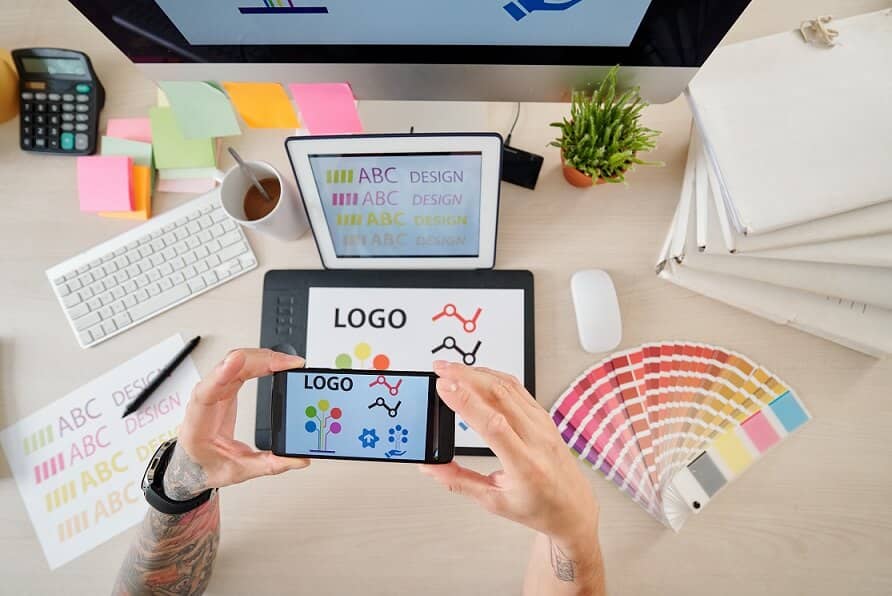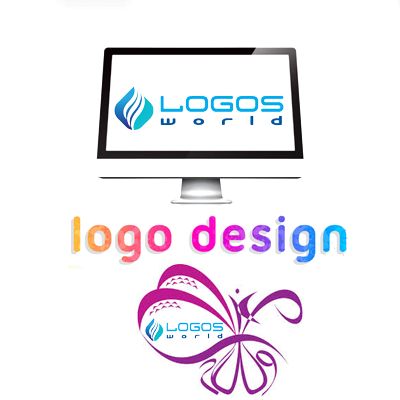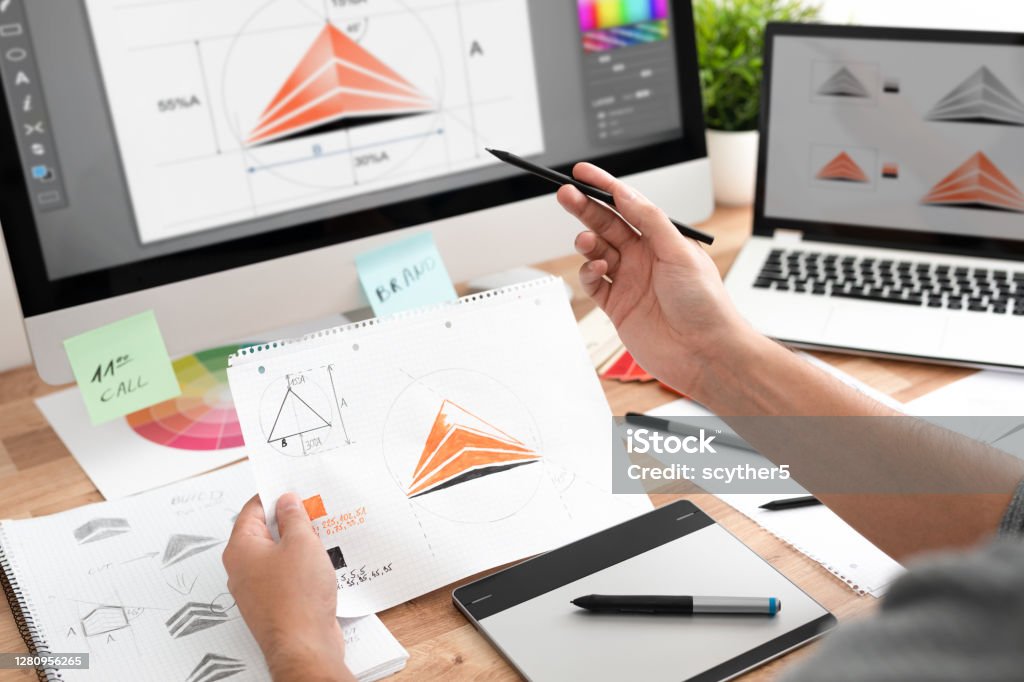
In the world of branding, an effective logo can make all the difference. It serves as the face of a company, conveying its values, personality, and message to the world.
But designing a logo that truly resonates with the target audience requires careful consideration and skill. In this article, we will explore the 12 golden rules of effective logo design, covering everything from understanding your target audience to mastering typography and color schemes.
Join us as we delve into the art and science behind creating impactful logos.
Understanding Your Target Audience
One of the most crucial aspects of logo design is understanding your target audience. To create an effective logo, it is essential to gain insight into the preferences and behaviors of the people you are trying to reach. Understanding target market and conducting thorough consumer behavior analysis will provide valuable information that can shape the design process.
To begin, understanding your target market involves identifying their demographics, such as age, gender, and location. This information will help determine the visual elements and messaging that will resonate with your audience.
Additionally, delving into consumer behavior analysis allows you to gain insights into their motivations, needs, and desires. By understanding what drives your target audience, you can create a logo that speaks to them on a deeper level.
Learning From Big Brand Lessons
The article delves into the valuable lessons that can be learned from big brands in order to create effective logo designs. Big brand success stories can provide valuable insights into what works and what doesn't when it comes to logo design. By studying the successes and failures of these well-established brands, designers can learn from their mistakes and avoid making similar ones in their own designs.

One of the key lessons to learn from big brands is the importance of simplicity. Successful logos are often clean, minimalistic, and easily recognizable. Another lesson is the significance of creating a logo that resonates with the target audience. Big brands understand the importance of connecting with their customers on an emotional level through their logo design.
Moreover, big brands teach us the importance of consistency in branding. A logo should be consistent across all platforms and mediums to build brand recognition and loyalty. By learning from the successes and mistakes of big brands, designers can create effective logo designs that communicate the brand's message and connect with the target audience.
Exploring Effective Color Schemes
To create visually appealing and impactful logos, it is essential to explore and understand effective color schemes. Exploring color psychology can help designers make informed decisions about which colors to use in their logos.
Different colors evoke different emotions and have different meanings, so it is important to choose colors that align with the brand's message and target audience.
Creating harmonious palettes is another key aspect of effective logo design. Harmonious color schemes use colors that complement each other and create a sense of balance and unity. This can be achieved by using colors that are adjacent on the color wheel or by using complementary colors.
Mastering Typography in Logo Design
Consistently and yet, typography plays a crucial role in mastering logo design, allowing for the effective communication of a brand's message and identity.
Typography tips can greatly influence the overall impact of a logo. The font selection alone can convey emotions, create a sense of professionalism, or capture a specific aesthetic. When choosing a font for a logo, it is essential to consider the target audience and the brand's personality.

Serif fonts, for example, can convey tradition and elegance, while sans-serif fonts are often associated with modernity and simplicity. Additionally, it is important to pay attention to the legibility and scalability of the chosen font, as it needs to work well across various mediums and sizes.
Embracing Simplicity for Impactful Logos
When it comes to creating impactful logos, one of the key principles to embrace is simplicity.
The power of minimalism cannot be underestimated, as it allows for a clear and memorable design that is easily recognizable.
Power of Minimalism
Minimalism is an essential aspect in creating impactful logos that resonate with the target audience. When it comes to branding, simplicity holds immense power. Here are three reasons why embracing minimalism can have a significant impact on logo design:
Memorable: Minimalistic logos often use clean lines, negative space, and simple shapes to create a memorable visual identity. This simplicity allows the logo to stand out and be easily recognized by the audience.
Timeless: Minimalistic designs have a timeless quality to them. By stripping away unnecessary elements, these logos can withstand the test of time and remain relevant for years to come.
Versatile: Minimalistic logos are versatile and can be easily adapted to various mediums and sizes. Whether it's a small business card or a large billboard, the simplicity of the design ensures that the logo remains clear and legible.

Less Is More
To achieve impactful logos, designers should prioritize embracing simplicity, allowing the design to make a strong impression on the target audience. Simplicity in branding is a powerful tool that can communicate a clear message and create a lasting impression.
Minimalist logo design, characterized by clean lines, minimal elements, and negative space, has gained popularity in recent years for its ability to convey a brand's essence in a concise and memorable way. By stripping away unnecessary elements, minimalist logos can evoke a sense of sophistication, elegance, and modernity. This approach allows the audience to focus on the core message and values of the brand, creating a stronger connection and fostering brand loyalty.
In a world filled with visual clutter, simplicity stands out and leaves a lasting impact on the audience, making it an essential aspect of effective logo design.
Ensuring Versatility in Logo Design
An essential aspect of creating a highly versatile logo design is to carefully consider the various potential applications and mediums in which it will be used. Versatility in logo design is crucial for adaptability and design flexibility.
Here are three key factors to ensure the versatility of a logo design:
Scalability: A versatile logo design should be easily scalable, meaning it can be resized without losing its visual impact or legibility. This allows the logo to be used across different platforms and sizes, from small icons to large banners.
Color Variations: A versatile logo design should be able to work in different color variations, such as full color, grayscale, or even black and white. This ensures that the logo remains effective and recognizable regardless of the color limitations of certain mediums.

Simplified Versions: It is important to create simplified versions of the logo that can be used in situations where the original design might not work. These simplified versions should retain the core elements and essence of the logo while being adaptable to different mediums and sizes.
Incorporating Meaningful Symbolism
When it comes to logo design, incorporating meaningful symbolism can have a significant impact on the effectiveness of the logo.
By using symbols that resonate with the target audience, designers can create a logo that communicates a deeper message and connects with people on an emotional level.
Effective symbolism techniques, such as using metaphors or cultural references, can enhance the logo's meaning and make it more memorable.
Ultimately, the use of symbolism in logo design plays a crucial role in building a strong brand identity.
Symbolic Design Impact
Symbolic design impact significantly enhances the depth and resonance of a logo, allowing it to communicate powerful messages to its intended audience. By incorporating meaningful symbolism, logos can tap into the subconscious mind of viewers and evoke emotions that align with the brand's identity.
Here are three ways symbolic design can make an impact:

Symbolic Design Trends: Staying updated with current design trends is crucial to create a logo that feels fresh and relevant. Incorporating popular symbols or motifs can help the logo resonate with the target audience and create a sense of familiarity.
Psychological Impact: Symbols have the power to evoke specific emotions and associations. By carefully selecting symbols that align with the brand's values and personality, logos can create a psychological impact on viewers, helping to build a strong brand identity.
Memorability: Symbolic logos have a higher chance of being remembered by viewers. When a logo incorporates meaningful symbolism, it becomes more than just a visual representation; it becomes a powerful tool that can leave a lasting impression on the audience.
Incorporating meaningful symbolism in logo design allows brands to connect with their audience on a deeper level. By tapping into the power of symbols, logos can communicate messages that resonate with viewers and create a lasting impact.
Effective Symbolism Techniques
One effective technique for incorporating meaningful symbolism in logo design is by utilizing a combination of abstract shapes and universal symbols. By using abstract shapes, designers can create a visual language that goes beyond literal representation and taps into the subconscious mind. These shapes can evoke emotions and convey ideas that resonate with the target audience.
Universal symbols, on the other hand, have a shared meaning across cultures and can instantly communicate a message or concept. Incorporating symbolic representation in logo design allows for visual storytelling, where the logo becomes a powerful tool for conveying the brand's values, mission, and story.
This technique not only creates a visually appealing logo but also establishes a strong connection with the audience, making the brand more memorable and meaningful.

Symbolism and Brand Identity?
Incorporating meaningful symbolism in logo design can create a strong brand identity and establish a connection with the target audience. Symbolism plays a crucial role in logo design as it helps convey the values, personality, and message of a brand. It adds depth and meaning to a logo, making it memorable and impactful.
Here are three reasons why symbolism is important in logo design:
Captures Attention: Symbolism has the power to capture the attention of the audience and make a lasting impression. A well-designed symbol can instantly communicate the essence of a brand and pique the curiosity of potential customers.
Builds Emotional Connection: Symbolism can evoke emotions and create a sense of connection with the audience. When a logo resonates with people on a deeper level, it fosters trust and loyalty towards the brand.
Differentiates from Competitors: Symbolism helps differentiate a brand from its competitors by creating a unique visual identity. It allows a brand to stand out in a crowded market and be easily recognizable.
Incorporating meaningful symbolism in logo design is therefore essential for building a strong brand identity and establishing a meaningful connection with the target audience.
Balancing Tradition and Innovation
Finding the right equilibrium between legacy and novelty is paramount in creating a logo that resonates with both traditional and forward-thinking audiences.

In the world of logo design, it is often a delicate balance to strike between traditional vs modern and innovation in design. On one hand, a logo that pays homage to tradition evokes a sense of trust and reliability, appealing to a more conservative audience.
On the other hand, incorporating innovative elements in the design can attract a more modern and progressive audience, showcasing the brand's ability to adapt and stay relevant.
Achieving this balance requires a deep understanding of the target audience and their preferences, as well as a creative and knowledgeable approach to logo design.
Creating Memorable Logos
When it comes to creating memorable logos, there are several key points to consider.
One of the most important factors is striking a balance between using symbolic elements and being too literal in the design.
Additionally, embracing minimalism and simplicity can help logos to be easily recognizable and memorable.
Finally, creating an emotional impact through the use of color, typography, and imagery can leave a lasting impression on the audience.

Symbolic Vs. Literal
To maximize brand recognition and leave a lasting impression on consumers, designers must strive to evoke meaning through symbolic elements rather than relying solely on literal representations in logo design. Symbolic representation in logos allows for a deeper connection with the audience, as it taps into their emotions and values.
Here are three reasons why symbolic logos are more effective:
Memorable: Symbolic logos have the power to leave a lasting impression in the minds of consumers. They create a visual identity that is unique and easily recognizable, making the brand stand out from its competitors.
Versatile: Symbolic logos offer flexibility in terms of application and scalability. They can be easily adapted to different platforms and sizes without losing their impact, ensuring consistent brand representation across various mediums.
Timeless: Unlike literal interpretations that may become outdated or lose relevance over time, symbolic logos have the potential to remain timeless. They transcend trends and fads, allowing the brand to maintain its relevance and appeal to a wide range of audiences.
Minimalism and Simplicity
With the use of minimalism and simplicity, designers can craft memorable logos that leave a lasting impression on the target audience.
Minimalism in logo design involves stripping away unnecessary elements and focusing on the core message. By using clean lines, negative space, and limited colors, designers create logos that are visually appealing and easy to remember.

Simplicity plays a crucial role in creating a strong brand identity. A simple logo allows for easy recognition and symbolizes a brand's values and personality.
Symbolic representation is essential in minimalistic logos, as it conveys a deeper meaning and connects with the audience on a subconscious level.
Visual storytelling is another element that can be incorporated into minimalistic logos, allowing the brand to communicate its story and values in a visually compelling way.
Emotional Impact
Consistently creating logos that evoke strong emotional responses is a key factor in designing memorable brand identities. Emotional connection and psychological impact play a significant role in shaping how consumers perceive and remember a brand.
To create logos with a powerful emotional impact, designers should consider the following:
Understand the target audience: By understanding the demographics, interests, and values of the target audience, designers can create logos that resonate with their emotions and aspirations.
Use colors strategically: Different colors evoke different emotions. Designers should choose colors that align with the brand's personality and message to create a lasting emotional impact.

Incorporate storytelling elements: By telling a story through the logo, designers can evoke emotions and make the brand more relatable and memorable.
Achieving Visual Harmony
Creating a visually harmonious design is essential for a successful logo that resonates with the target audience. Visual balance and creating harmony are crucial elements in achieving this goal. Visual balance refers to the distribution of visual elements in a design, ensuring that no single element overpowers the others. It involves finding the right proportions, sizes, and positions for each element to create a sense of equilibrium.
Creating harmony, on the other hand, involves combining elements in a way that they complement each other and create a unified whole. This can be achieved through careful consideration of color schemes, typography, and overall layout.
Conveying Brand Personality Through Logos
The incorporation of visual elements that reflect the brand's personality is essential in conveying the desired brand identity through logos. A logo serves as a powerful tool for establishing brand associations and creating a lasting impression on the target audience.
To effectively convey brand personality through logos, consider the following:
Visual storytelling: Utilize imagery and design elements that tell a story and evoke emotions that align with the brand's personality. This helps create a deeper connection with the audience and enhances brand recall.
Consistency: Ensure that the logo design is consistent with the brand's overall visual identity, including color schemes, typography, and graphic elements. This consistency helps reinforce brand identity and build brand recognition.

Simplicity: Keep the logo design clean, simple, and easily recognizable. A cluttered or complex design can detract from conveying the brand's personality and may confuse the audience.
Testing and Refining Your Logo Design
To ensure optimal effectiveness, it is essential to conduct thorough testing and refinement of your logo design.
Testing methods can help you gather valuable feedback and insights from your target audience, allowing you to refine and improve your logo design.
One effective testing method is A/B testing, where you create multiple versions of your logo and test them against each other to see which one resonates the most with your audience.
Another method is focus group testing, where you gather a small group of individuals who represent your target audience and gather their opinions and reactions to your logo design.
Additionally, feedback from surveys and online polls can also provide valuable insights for refining your logo design.
The refining process involves taking the feedback received from testing and making necessary adjustments to your logo design, such as tweaking colors, fonts, or layout.

Frequently Asked Questions
How Do You Choose the Right Font for a Logo Design?
Choosing the right font for a logo design is crucial due to its impact on brand identity. It requires considering factors such as legibility, uniqueness, and relevance to the brand's personality, ensuring a visually appealing and memorable logo.
What Are Some Common Mistakes to Avoid When Designing a Logo?
When designing a logo, it is important to avoid common mistakes such as overcomplicating the design, using too many colors or fonts, and failing to consider scalability. Simplicity is key in creating an effective logo.
How Can You Ensure That Your Logo Design Is Unique and Stands Out From Competitors?
To ensure a unique and standout logo design, focus on creating a visually striking and memorable identity that sets your brand apart. Utilize innovative design elements, distinctive typography, and bold color choices to make a lasting impression on your target audience.
What Are the Key Elements to Consider When Designing a Versatile Logo That Can Be Used Across Different Mediums?
When designing a versatile logo for use across different mediums, key elements to consider include logo scalability and maintaining consistency. These factors ensure that the logo remains impactful and recognizable regardless of its size or the platform it is displayed on.
How Important Is It for a Logo to Convey the Brand's Personality and Values?
It is highly important for a logo to convey a brand's personality and values as it plays a crucial role in creating brand consistency and influencing brand perception. A well-designed logo can effectively communicate a brand's identity and resonate with its target audience.
 Digital Art InstructionDIY Infographics DesignMobile Game ArtworkPersonalized Logo Design3D AnimationeBook Covers DesignPrivacy PolicyTerms And Conditions
Digital Art InstructionDIY Infographics DesignMobile Game ArtworkPersonalized Logo Design3D AnimationeBook Covers DesignPrivacy PolicyTerms And Conditions
